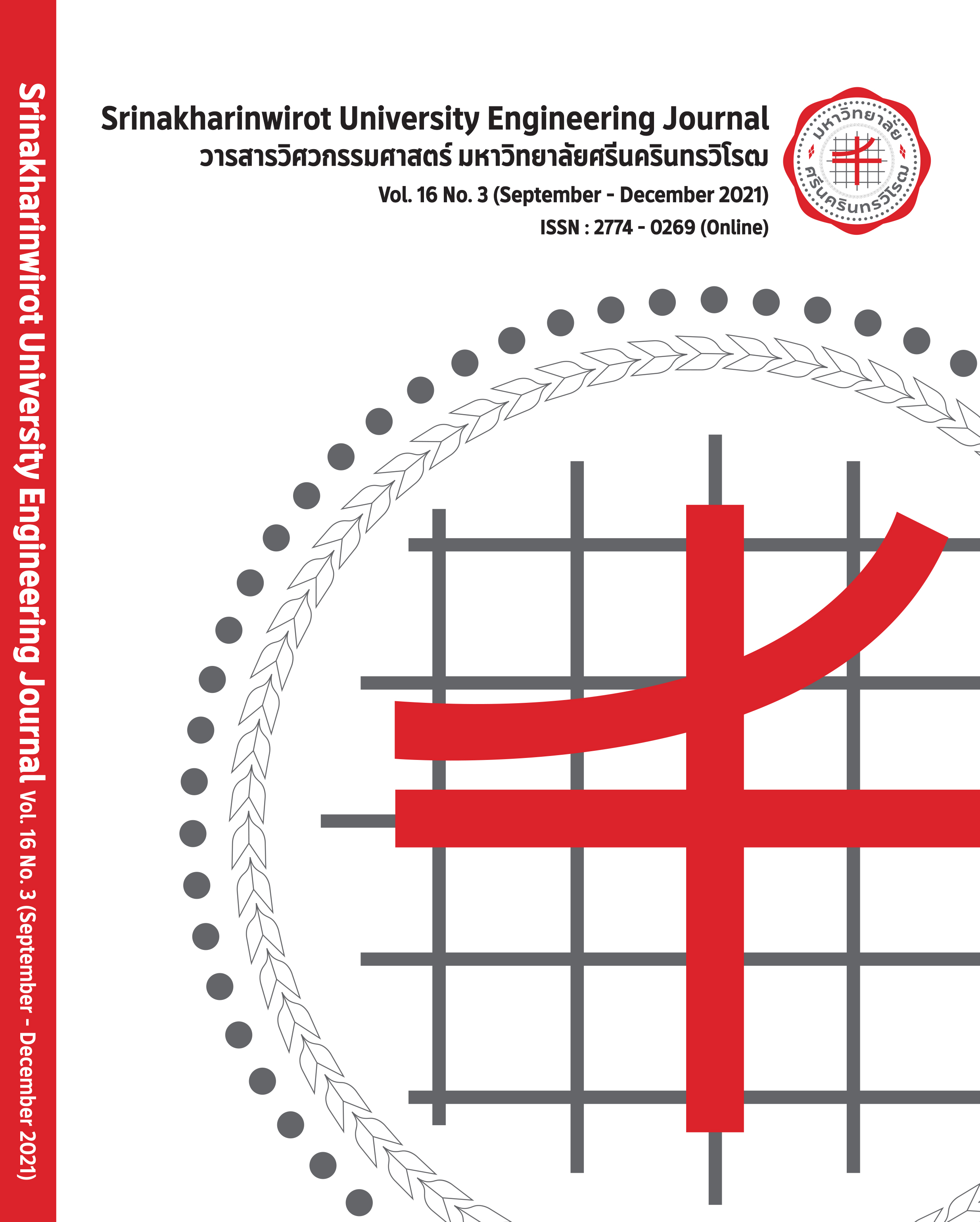รูปแบบการเก็บรักษาที่เหมาะสมกับผลผลิตที่มีความบอบบางสูง : กรณีศึกษาผักต้นอ่อนทานตะวัน
Main Article Content
บทคัดย่อ
การวิจัยนี้มีวัตถุประสงค์เพื่อศึกษาผลการเปลี่ยนแปลงอุณหภูมิและรูปแบบการเก็บรักษาที่มีต่ออายุการเก็บรักษาผักต้นอ่อนทานตะวันหลังการเก็บเกี่ยวที่จัดเก็บในตู้แช่เย็น การศึกษาครั้งนี้ใช้การวิจัยเชิงทดลองเพื่อหาอายุการเก็บรักษาและรูปแบบการจัดเรียงผักต้นอ่อนทานตะวันในตู้แช่เย็นที่เหมาะสมโดยการรวบรวมจาก 9 การทดลองย่อย ด้วยการบันทึกระยะเวลาจนพบความเสียหายกับผักต้นอ่อนทานตะวันที่จัดเก็บในตู้แช่เย็นภายใต้อุณหภูมิที่แตกต่างกัน 3 ระดับ ได้แก่ 2, 5 และ 7 องศาเซลเซียส และรูปแบบการจัดวางที่แตกต่างกัน 3 รูปแบบ ได้แก่ วางชิดติดกัน เว้นระยะห่าง และเว้นช่องว่างเฉพาะด้านหลังตู้แช่เย็น โดยแต่ละการทดลองจะทำซ้ำ 5 ครั้ง และวิเคราะห์ผลการทดลองด้วยสถิติการวิเคราะห์ความแปรปรวนแบบสองทาง ณ ระดับนัยสำคัญทางสถิติที่ .05 ผลการทดลอง พบว่า อุณหภูมิเฉลี่ยและรูปแบบการจัดวางมีผลต่ออายุการเก็บรักษาผักต้นอ่อนทานตะวันอย่างมีนัยสำคัญทางสถิติที่ระดับ .05 โดยอุณหภูมิและรูปแบบที่เหมาะสมที่สุดคือเก็บรักษาที่อุณหภูมิ 5 องศาเซลเซียส และจัดวางแบบชิดติดกัน ทำให้มีระยะเวลาการเก็บรักษาได้นานที่สุดเฉลี่ย 6.8 วัน
Article Details

This work is licensed under a Creative Commons Attribution-NonCommercial-NoDerivatives 4.0 International License.
ลิขสิทธิ์เป็นของวารสารวิศวกรรมศาสตร์ มหาวิทยาลัยศรีนครินทรวิโรฒ
References
C. Chaiyos and C. Mayukapun, Logistics and Supply Chain Strategy Competing in the Global Market, Nonthaburi : Vision prepress Ltd., 2007, pp. 34-39.
T. Sirisuwannakit, “Logistics system planning for fruit Export,” Journal Thai VCML, vol.5, no.10, pp. 37-52, Jun. 2008.
S. Bunpituk, K. Rattanavijit and S. chomsom, “Study and Analysis of the Supply Chain Management of Mangosteen Producers in Chanthaburi Province,” Industrial Technology Lampang Rajabhat University Journal, vol.5, pp. 105-106, Jan. 2015.
T. Karot, P. Tharawetcharak and C. Pornsing, “Analysis and Logistics Cost Reduction for Organic Vegetables in the West of Thailand,” Journal of Science and Technology, vol.10, no.19, pp. 76-80, Jan. 2019.
C. Siriphanit, Physiology and Technology Harvest Fruit and Vegetables, Bangkok : Odeon Store Ltd., 1998, pp. 89-102.
K. Bunya-atichart, “Posthavest Management and Effects on Quantity and Quality losses of Leafy Vegetable,” Princess of Naradhiwas University Journal, vol.7, no.3, pp. 148-149, Sep. 2015.
D. Bunyakert, Post-storage Harvest Fruit and Vegetables, Bangkok : Odeon Store Ltd., 2002, pp. 59-62.
A.K.Thompson, Fruit and Vegetables Harvesting, Handing and Storage, Oxford, UK.: Blackwell Publishing Ltd., 1996, pp. 198-203.
R.B.H. Will, W.B. McGlasson, D. Graham, and D.C. Joyce, Postharvest an introduction to the physiology and handling of fruit, vegetables and ornamentals, Australia: University of New South Wales Press Ltd., 1998.
J.F. Thompson, F.G. Mitchell, T.R. Rumsey, R. F. Kasmire and C.H. Crisosto., Commercial Cooling of Fruits, Vegetable and Flower, Oakland, CA: University of California, Agriculture and Natural Resource, Published., 2008, pp. 25-26.
A.K.Thompson,Postharvest Technology of Fruit and Vegetables, Oxford: Blackwell Science Ltd., Cambridge, 1996, pp. 69-72.
R.E. Paull. “Effect of temperature and relative humidity on fresh commodity quality,” Postharvest Biology and Technology, vol.15, no.3, pp. 263-277, Mar. 1999.
K. Bunya-atichart, “Effects of Low Temperatures and Storage Duration on Shelf Life of Ready to Cook Melinjo (Gnetum gnemon L.) Leaves,” Songklanakarin Journal of Plant Science, vol.4, no.4, pp. 55-59, October-December, 2017.
C. Siriphanit, “Post-harvest handling of fruits and vegetables,” Horticulture Journal (Thailand), vol.21, no.2, pp. 10-19, Mar., 2006.
C. Siriphanit, Post-harvest handling of fruits and vegetables, vol.6, Bangkok : Kasesart University Press, 2006, pp. 55-57.

